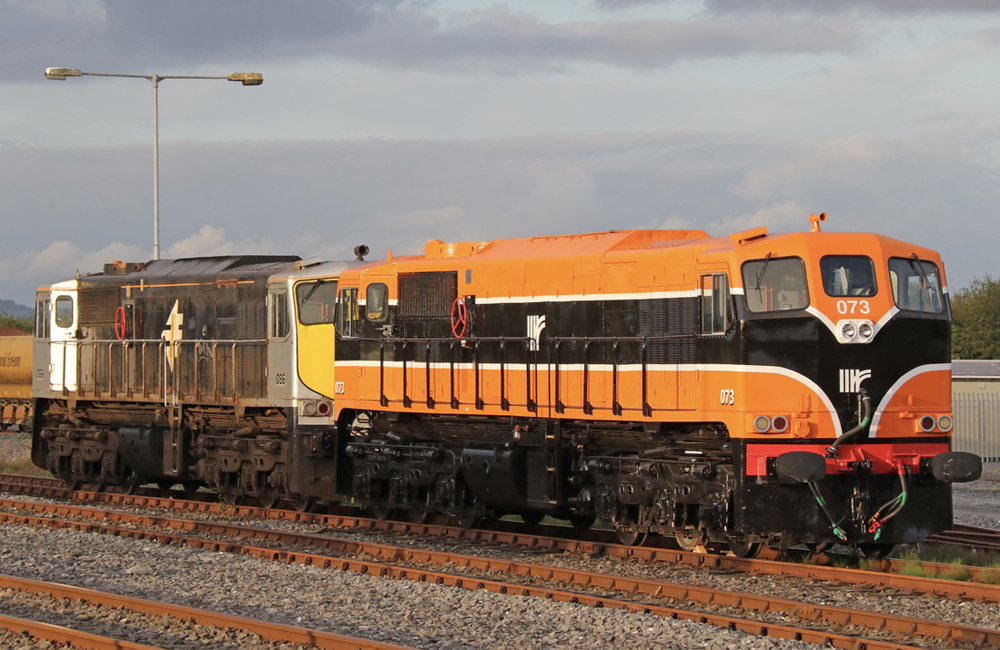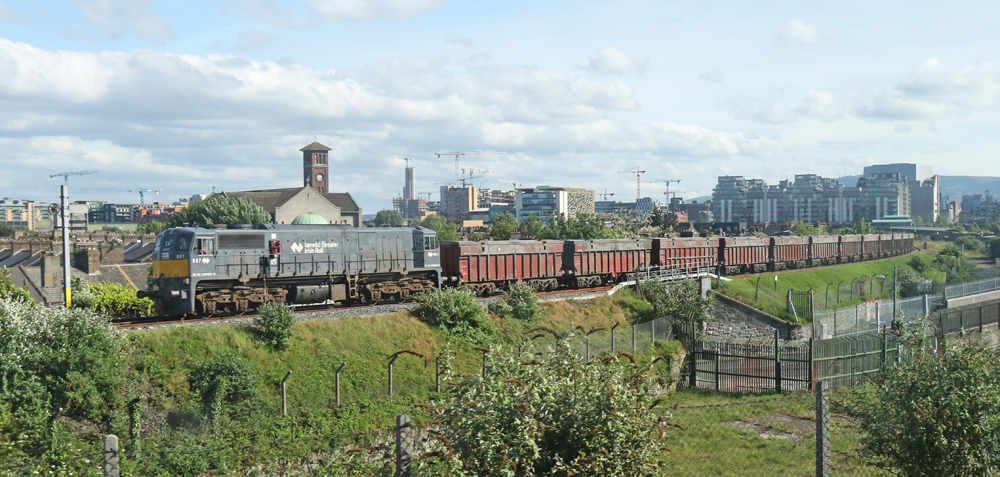
Irish national rail company Iarnród Éireann (IÉ) has announced plans to convert one of its EMD-built locomotives to burn hydrogen instead of diesel fuel.
IÉ is working in partnership with Latvian rail engineering firm DIGAS to test the use of a hydrogen-fueled internal combustion engine in an existing Class 071 diesel freight locomotive. Since earlier this year, DIGAS has been part-owned by French hydrogen specialist company HDF Energy (Hydrogène de France). As part of that deal, the two companies announced plans to develop hydrogen conversion solutions for freight diesel locomotives.
Unlike other rail hydrogen fuel projects where hydrogen is used to run locomotives or passenger multiple units via fuel cells or batteries, or through specially produced hydrogen engines, this project aims to show that conversion of existing engines is possible with hydrogen used instead of diesel in the locomotive’s existing internal combustion engine.
IÉ will provide a Class 071 locomotive for the conversion, as well as workshop facilities for installation, testing, and commissioning activities. The 18 Class 071 units built in La Grange, Ill., are still active; formerly used for passenger service, they are now used for freight and maintenance-of-way trains.
The IÉ Class 071 is the EMD JT22CW export model. Small numbers of the double-cab design units were also built for use in Northern Ireland (Class 111) plus Yugoslavia (now in the Serbian Railways fleet as Class 666). Six very similar JT26CW locos were built under license in Brazil for use in Peru.
Kit will be used for conversion
DIGAS will manufacture and install a Hydrogen Internal Combustion Engine (H2 ICE) retrofit kit to convert the existing EMD12-645E3B 12-cylinder engine to burn hydrogen rather than diesel. The two companies have agreed to share technical and commercial information necessary for DIGAS to design, manufacture, install, and support the commissioning of the conversion kit and to allow IÉ to test the retrofitted locomotive.
According to IÉ and DIGAS, the “innovative technology” to be used requires minimal changes to the locomotive. IÉ say that if successful, the project will “showcase a more practical and cost-effective way to decarbonize and run the existing diesel locomotive fleet with hydrogen powered engines,” and more conversions could follow. IÉ describes hydrogen as a cleaner and renewable fuel compared to diesel.
The project is likely to cost around $1.5 million, funded jointly by IÉ, DIGAS, and the European Union. Design work is already underway. The locomotive should be ready for static testing in 2024 with trial operations in 2025.
This is not the first European project to retrofit existing diesel locomotives to run on hydrogen. In Poland, a diesel switcher has been converted to operate using hydrogen fuel cells and batteries, and similar fuel-cell-plus-battery locomotives, both conversions and new builds, are planned or tesing in other countries.
In October 2021, Estonian state-owned rail freight company Operail signed an agreement with Stargate Hydrogen for the conversion of up to 40 ex-Union Pacific GE C36-7 locomotives that it already has in its fleet into hydrogen-fueled locomotives. It is unclear if this project is still underway or exactly what technology was proposed. Operail has, however, previously converted a C36 to run on a mixture of Liquefied Natural Gas and diesel.















This might be a solution for the upcoming rules in CA that make replacing older diesel locos on short lines such an issue.
I have always admired the idea of those double ended cabs on Euro diesels, such as Vickers.
GE Powerhaul type PH37ACi is an example of a contemporary diesel-electric locomotive in this regard.
Dr. Güntürk Üstün